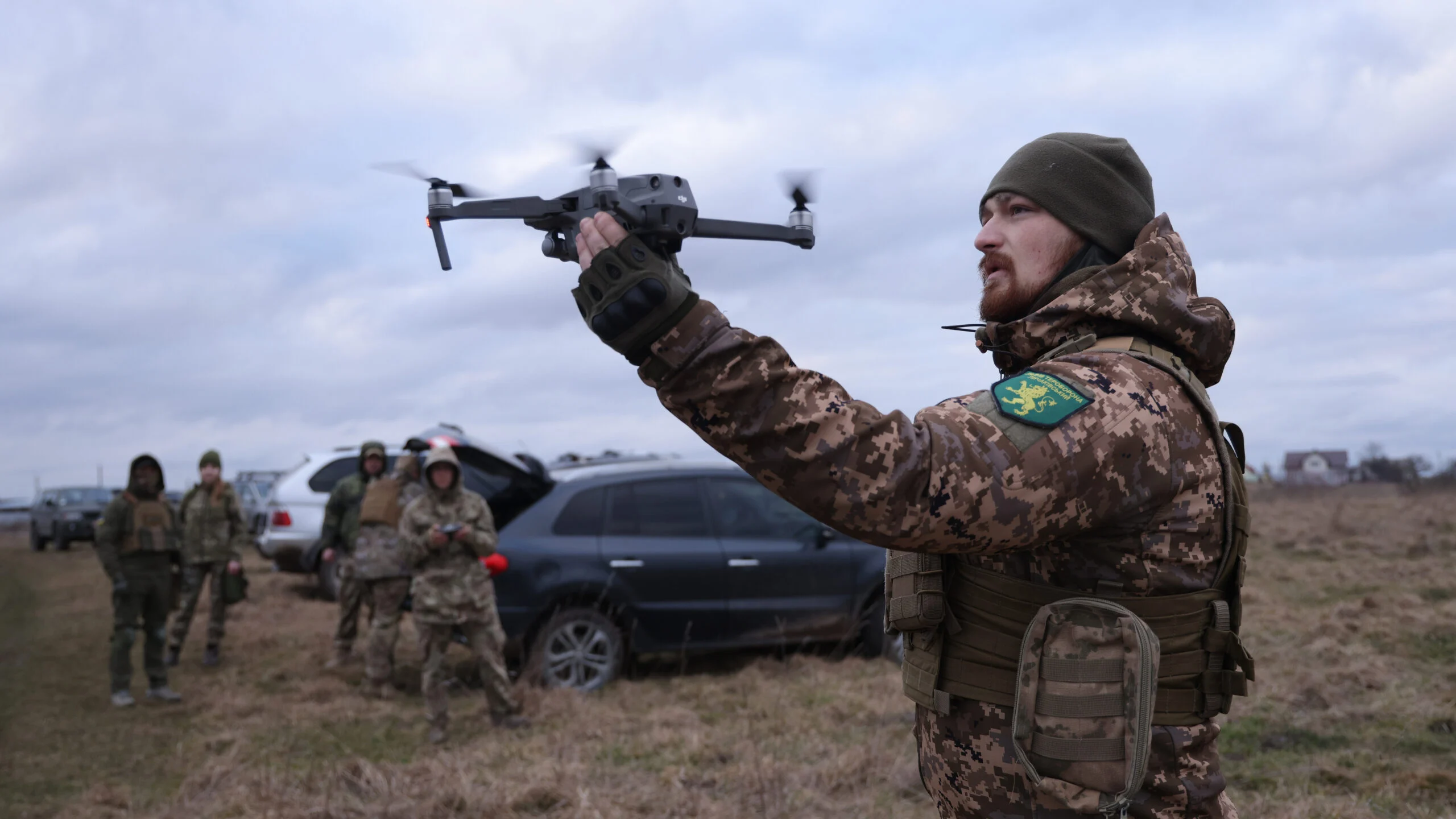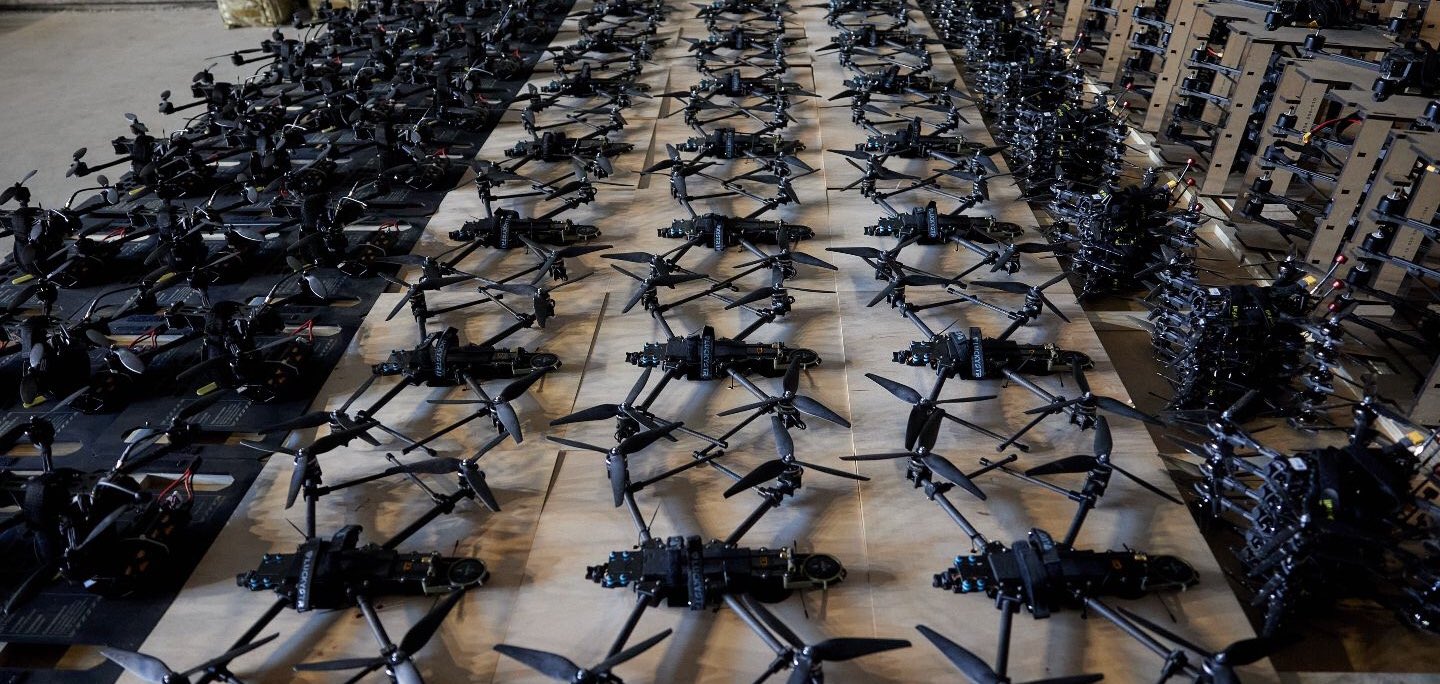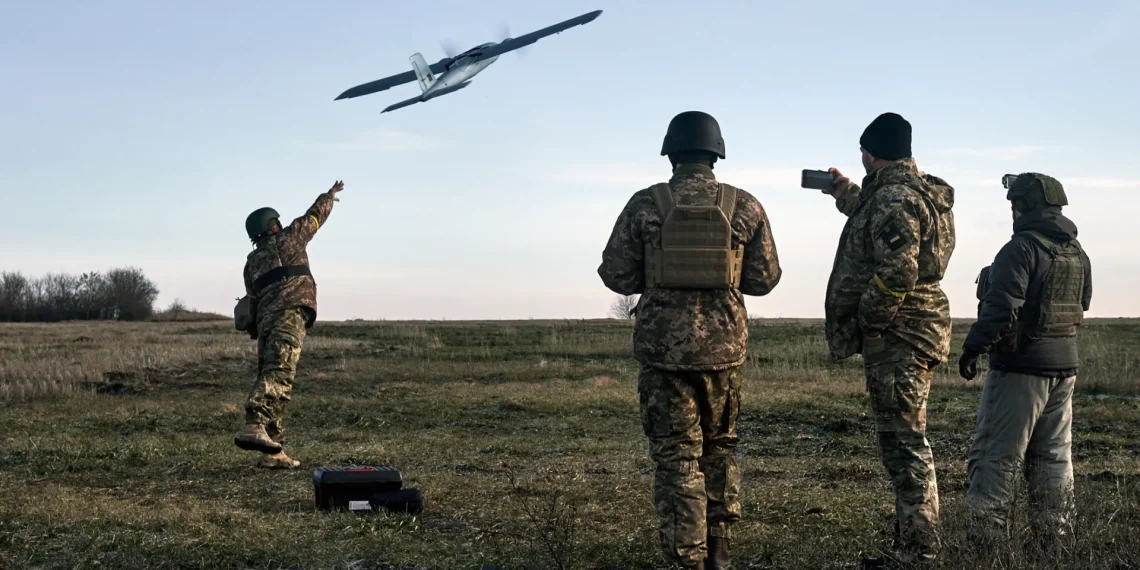Ukraine’s Commander-in-Chief, Oleksandr Syrskyi, emphasized the critical role of unmanned systems in gaining an edge over Russia‘s superior forces.
Syrskyi, prioritizing the development of drones, seeks asymmetric solutions to counterbalance the numerical disadvantage. This strategic shift reflects Ukraine‘s pursuit of innovative approaches amid escalating tensions.
President Volodymyr Zelenskiy’s directive in February underscores the nation’s commitment to modernize its military capabilities. Establishing a separate branch dedicated to drone operations, led by Deputy Vadym Sukharevskyi, signifies a concerted effort to harness technological advancements in warfare.

As both sides escalate their use of drones, the conflict extends beyond traditional battlegrounds. Strikes on military installations, energy facilities, and transportation networks demonstrate the evolving nature of warfare in Eastern Europe.
Despite facing resource disparities, Ukraine aims to leverage drones to disrupt enemy operations and safeguard its interests.
Military analysts recognize the potential of drones to provide Ukraine with a technological advantage, particularly in light of Russia’s vulnerabilities in traditional weaponry. However, Russia’s rapid development of its drone industry poses a formidable challenge.

The increasing sophistication of drones enables Ukraine to target key Russian assets, including oil refineries and the Black Sea Fleet in Crimea. These attacks not only inflict damage but also force Russia to allocate resources to defend against future assaults.
Since the onset of Russia’s invasion more than two years ago, the conflict has exacted a heavy toll on both sides, resulting in casualties and displacements.
Amidst this protracted struggle, Ukraine’s emphasis on drone warfare reflects a strategic imperative to adapt and innovate in the face of adversity.




